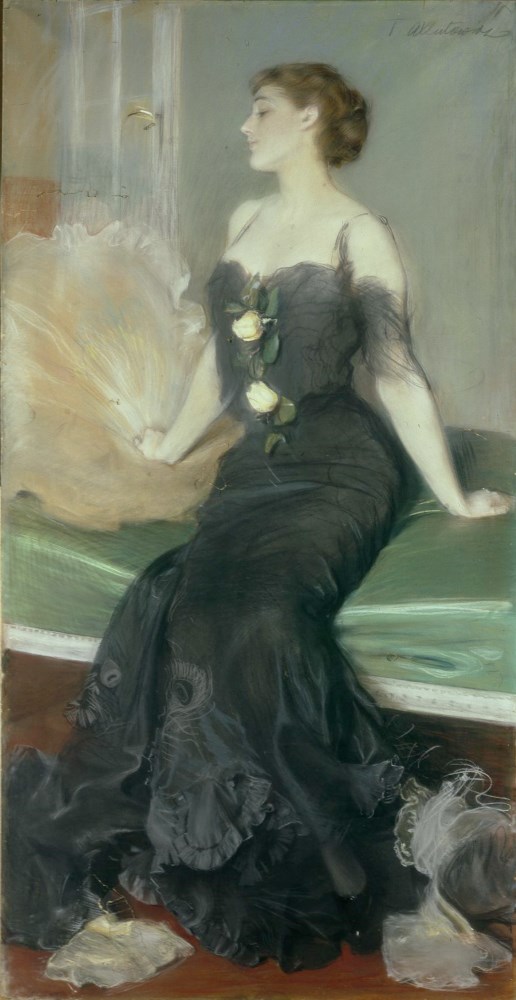Description:
Teodor Axentowicz (1859-1938) gained fame as a portraitist. This subject matter perfectly fit into his professional activity. Young ladies from the upper classes were happy to pose for the renowned artist who was appreciated in Parisian salons, and who accepted these commissions with equal enthusiasm. On the other hand, it allowed Axentowicz to focus on what seemed to interest him most – attempts to capture the mysterious and individual nature of women. “Pure femininity is not of the senses, it is the psychology of gender […] The dominant accent in female heads is expression. These heads are beautiful, sometimes even very beautiful, as is the case among real women, but Axentowicz never stops at a beautiful mask. He looks for life contained in expression. ”*.
This fondness for studies on the beautiful gender also led to his interest in female artistic education. In 1897, Teodor Axentowicz founded a painting school for women** in Krakow. Among its lecturers, Leon Wyczółkowski and Jan Stanisławski appeared. He noticed the complexity of femininity and the creative potential dormant in it, which he intended not only to capture, but also to shape.
Description of the painting:
Greek and Roman mythology, along with the Bible, form the foundations of European culture and have penetrated into the general social consciousness. From them also come many symbols read by us subconsciously. These were willingly used by artists in their work. This is the case, for example, with Teodor Axentowicz and his Black Lady.
The painting is probably the first of many versions of this presentation made by the artist. A woman dressed in a long, black ball gown, revealing her arms, with a deep neckline and roses pinned to her bodice is shown here. The woman sits with her eyes closed and her head slightly tilted back. She supports herself with her straight arms, her hands clenched into fists resting on the sofa and … on the cushion, arranged in the shape of a shell. In this way, the hand is like a pearl in the shell of a mussel.
When many people hear the word “shell”, they close their eyes and see The Birth of Venus by Botticelli, where on the foaming waters of the sea a nude woman with disheveled hair stands on a large shell. This is no coincidence. The shell has been considered an attribute of the Greek goddess of beauty for centuries, as evidenced by, among others, frescoes preserved in Pompeii. On them, Aphrodite (the Roman equivalent of Venus) is fishing or floating on waves in a shell surrounded by small Erotes. This may have been related to the story of the birth of Venus, who one beautiful morning simply emerged from the sea foam on the shores of Cyprus.
The shell in Axentowicz’s painting can thus be interpreted as a symbol of femininity. The completion is the space. The whole scene takes place in a room, to which slightly opened doors are visible on the left side, in the background of the presentation. This is a boudoir – the most intimate space for a woman, where she gets dressed every morning. The presentation takes on a subtle eroticism, through the way the figure is framed, emphasized by the language of symbols.


